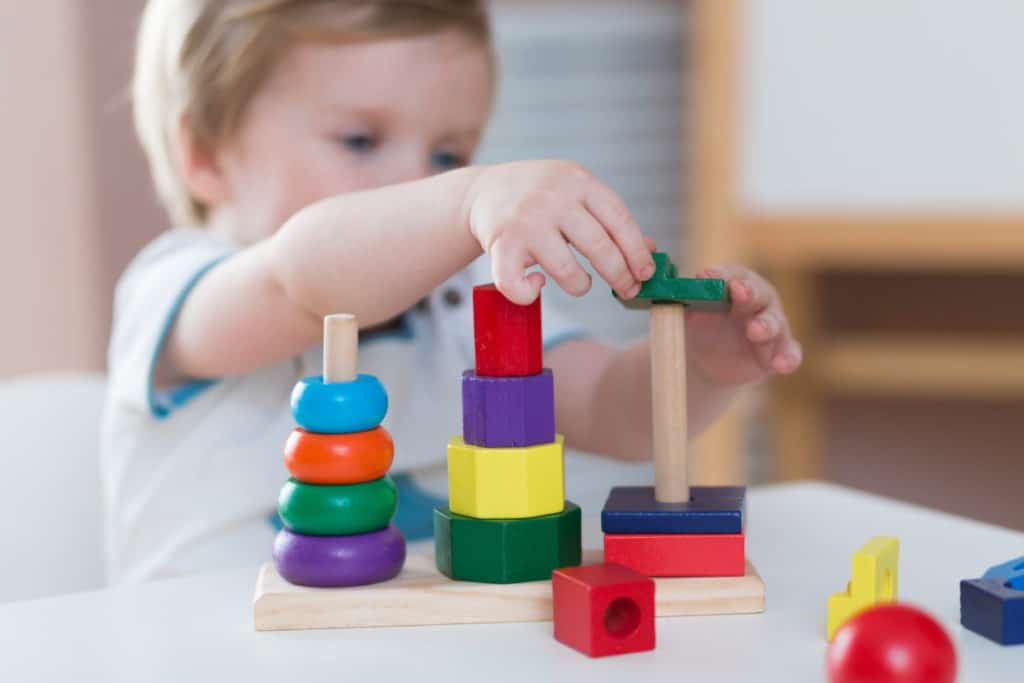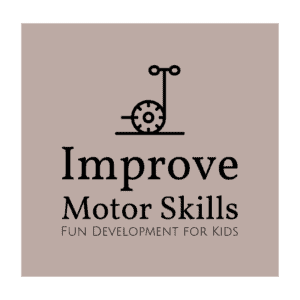Sorting games have multiple benefits for toddlers on cognitive and physical levels: e.g. they improve organizational skills, fine motor skills, and hand-eye coordination, and are a prerequisite for early mathematics.
I’ll give you a more in-depth overview of the importance of these benefits below and will also give you some cool ideas about how to notice sorting opportunities everywhere around you.

What are the Benefits of Sorting Games for Toddlers?
Prerequisite for Mathematics
Without truly thinking about it, kids tend to match and sort items based on various criteria: shape, size, color, etc. It’s a natural thing to create order around them.
Understanding the concept that items can be grouped together by similar criteria, is actually one of the prerequisites for early mathematics. By learning the concept of sorting, they will also be able to understand the similarities and differences between items, as well as understand and create patterns, improve their logic, and much more, all of which are required for mathematics. A child won’t be able to count or add numbers before they can understand the similarities of the items they would be counting.
Our daughter showed her first understanding of mathematics at around 14 months when she started to say ‘two’ whenever she saw items in pairs. It started with two stuffed toy pigs we had and she would say ‘two’ whenever she saw them together. At first, we thought that she had just learned this phrase by heart (as we had told her that there are two pigs). But ‘two’ started to come out of her mouth in situations where we hadn’t specifically told her that there were two of this or that: cars, people, cats, etc.
It was a happy day for us when we realized that she had fathomed this concept.
Prepares for Daily Life
Everyone is facing sorting and matching in their daily life – e.g. how to organize socks in a drawer or files on your computer. Playing sorting games as a child provides a good foundation for classifying items by certain characteristics and improving logical thinking, which are needed everywhere in daily life.
Check out this video below of a man having issues with placing a suitcase in a plane’s overhead compartment. It’s a bit funny, but mostly sad and reflects well what has been written in this paragraph. Might a shape sorting cube as a child have prevented such an issue? 🙂
Fine Motor Skills and Hand-Eye Coordination
Most of the sorting activities require fine movement of fingers to pick up items and group them together. Depending on the age of your toddler and the size of the items they are sorting, this can be an easy job or a real hassle for them.
Try to prepare the sorting activity according to your kid’s development level. An easy start might be sorting Lego Duplo bricks according to color or shape, while a more advanced step could be sorting peas, pumpkin seeds, or similar.
Organizational Skills
Getting things organized and creating chaos are both natural habits for people. You might have seen your toddler build something from blocks and then tear it apart. Or put some items in a box or basket and then throw them out again.
Sorting games allow your kid to experience both sides of this. They will be happy to place all the pieces in the right area (quite often according to their own and not the actual ‘rules’) and then as happily break everything apart. It’s a fine quality that adults seem to have forgotten (think of sand mandalas).
Introducing Sorting to Your Toddler
When you start introducing sorting activities to your child, start small. With a younger child, start with just two categories (two shapes, two colors, etc), and start bringing in more variety for an older child.
Before you start with the sorting game, talk to your kid about the items – their color, material, categories, etc. Let them know the characteristics of the items before starting the game. For example, ‘Look, this spoon is made of metal and it feels cold in your hand’, or ‘Leaves change color in the fall. Here are green, yellow, orange, and red leaves’. The goal is to let the kid know what they will be playing and working with.
And then clearly show your kid where each type of the items should be placed. Let them repeat and don’t worry too much if they won’t place the items in the right bins, they will at some point.
Ideas for Sorting Games around You
You don’t have to limit your kid to actual sorting toys but can introduce sorting activities wherever you are. Here are some ideas you can use.
Item Category
Combine anything, and have the child sort all of the items according to their category. The goal is to prepare multiple categories of items and have different items in each of the categories. Some examples:
- Toys (cars, dolls, blocks)
- Various household items (different spoons, different cups, different keys)
- Clothes (pants, shirts, overalls)
- Clean-up time – first put away dolls, then cars, then blocks, etc.
Shape
Sorting by shapes is relatively easy even for younger kids.
- Shape sorting cubes (toys) are a good starting point as they instruct the kid to enter the right shape through a dedicated hole in the box
- Utensils (spoons, forks, knives)
- Different kinds of fruit (apples, oranges, avocados, pears etc.)
- Different kinds of pasta (penne, macaroni, fusilli etc.)
- Cut out shapes from a stronger piece of paper and let the kid sort them
- Lego Duplo pieces
Color
- Leaves of different colors (green, yellow, red)
- Food (fruits and veggies, colorful cereals like fruit loops)
- Toys
- Colored pencils
- Laundry (e.g. black, white, colors or all colors separately)
- Post-it notes
- Lego Duplo pieces
- Caps of baby food pouches
- Straws
Size
- Toys (e.g. balls, cars, blocks)
- Rocks and pebbles
- Coins (make sure your kid won’t swollow them)
- Plates, bowls, cups
Texture
Combine items of different textures:
- Kitchenware (metal, wooden, plastic)
- Toys (fabrics, wooden, plastic)
Ideas for Sorting Activities Outdoors
- Different colored and shaped leaves
- Twigs of different lengths
- Acorns, horse chestnuts, pine cones
- Different flowers
- Seashells at the beach (see our full article on fine motor development on the beach)
Conclusion
The benefits of sorting games are clear – they are great to improve multiple skills your child needs in their life, both cognitive and physical. There are tons of sorting opportunities around you, just help your child to recognize these opportunities and make sure you give them enough time to learn, without correcting them if they decide to follow their own patterns.
